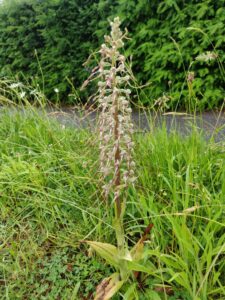 Roadsides across the county are bursting with colour following an increase in the number of designated wildlife verges.
Roadsides across the county are bursting with colour following an increase in the number of designated wildlife verges.
36 new wildlife verges have been declared by East Sussex Highways over the last year, protecting a further 37 miles of natural habitat and providing a haven for wildflowers and wildlife.
County-wide there are 176 designated wildlife verges, totalling more than 125 miles – the approximate distance from Lewes to Cambridge.
Roadside verges that support rare or vulnerable species, provide important habitats, or allow residents to have contact with the natural world may be declared a wildlife verge. In East Sussex the verges are easily identifiable by a small yellow, flower shaped sign.
East Sussex wildlife verges have been very successful. A rare Lizard orchid has been found growing on a site in Lewes, and one East Sussex verge contains 68 per cent of the UK population of Spiked Rampion. Both species are protected under Schedule 8 of the 1981 Wildlife and Countryside Act.
To protect the natural habit and allow the wildflowers to bloom and seed, wildlife verges will usually only be cut once a year and not at all between the beginning of March and the end of August.
Following increased interest in the ecological value of roadside verges and requests from residents for fewer cuttings, East Sussex Highways is also currently carrying out a rural grass cutting trial.
Verges in 12 parishes across the county will be cut just once this year to help create more wildlife corridors. East Sussex Highways will be monitoring the verges during the trial to record what grows.
Cllr Claire Dowling, lead member for transport and the environment, said: “Creating more wildlife verges and reducing rural grass cutting across East Sussex is an important part of our work to protect our natural environment.
“Wildlife verges provide valuable wildlife corridors and support diverse ecosystems, allowing rare wildflowers to flourish and offering a vital refuge for pollinators and other wildlife.
“Rural road verges can often be the last areas of declining habitats, such as woodland edges, meadows and downland, and it is important we protect and develop these natural environments.”
Residents who believe a verge to be of special ecological interest can submit an application for it to be considered a wildlife verge online.
People can find out more about the rural grass cutting trial, or provide feedback, on the East Sussex Highways website.


